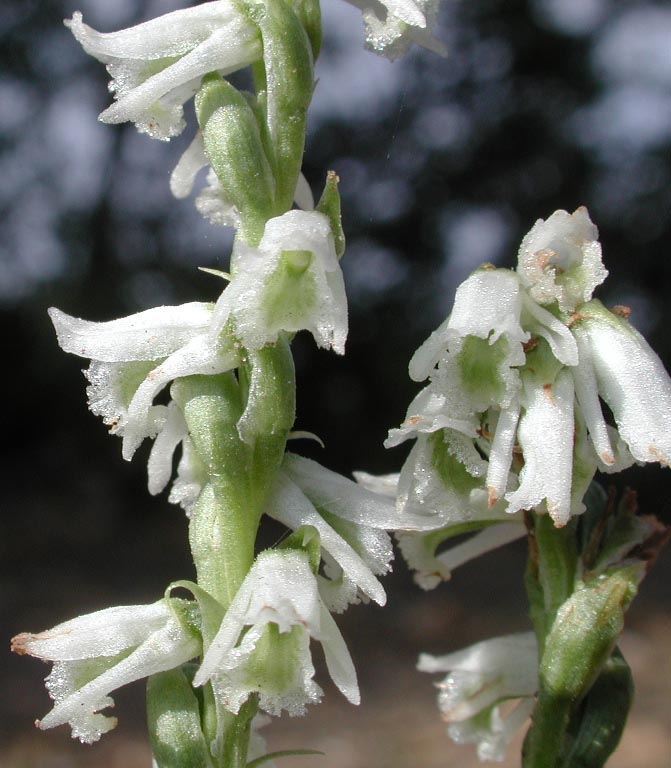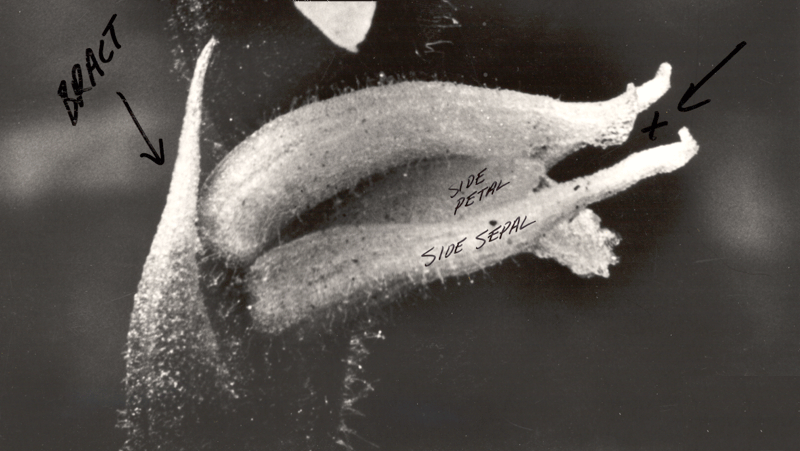 |
 |
|
Fall-blooming Spiranthes produce a basal rosette of leaves shortly after flowering. These persist until late Spring and the plants are not evident until inflorescence emergence in October/November. Leaves of parksii/cernua are long, narrow, and often lustrus whereas those of S. lacera var. gracilis are short, wide, and generally dull. The rosette leaves of parksii and cernua are similar, i.e., the two species cannot be distinguished on the basis of rosette leave structure. |
|

Flowers of S. parksii have short lateral petals, i.e., the sepals are longer than the petals and, as a result, the ends of the sepals appear as extensions at the tip of the flower. Typical cernua types (left, right photo) have flowers with lateral petals and sepals about the same length and the extended sepal tips are not evident. As compared to typical cernua types, the flowers of parksii tend to extend from the inflorescence stalk at an angle, as opposed to being perpendicular to the stalk. The parksii perianth (sepals + petals) is not as long as that of typical cernua and tends to be cream colored, as opposed to bright white. Thus, typical or 'woodland' cernua is a more 'showy' orchid. |
||||
|
The 'closed' type of Spiranthes cernua produces a flower that rarely opens, i.e., the perianth parts (sepals/petals) remain clustered together. The plants appear to be in the process of early inflorescence development, but inhibition of full anthesis (perianth opening for pollinators) is indicated by the presence of plump, developing ovaries located beneath the perianth. Plants of this type tend to be delicate when found in shaded, woodland habitats and more robust, often as colonizers, in open fields or roadsides. |